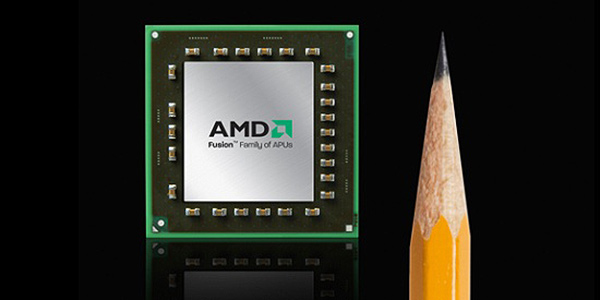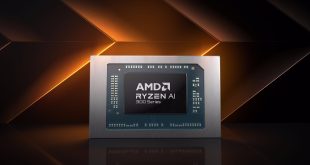An undisclosed maker of motherboards has already added mentions of AMD’s upcoming accelerated processing units in the binary of its BIOS. It is highly likely that AMD’s latest reference BIOS versions already include support of the company’s future microprocessors. As a result, mentions of the chips migrate to commercial products.
Planet3DNow reports that the latest BIOS binary version PI 1.4 contains references to AMD’s “Stoney Ridge” (ST) and “Bristol Ridge” (BR) accelerated processing units that are due next year. The addition of the processors to AMD’s reference BIOS indicates that the company has already begun preparations for the launch of its new accelerated processing units.
Both “Bristol Ridge” and “Stoney Ridge” accelerated processing units will use all-new AM4 form-factor and will be made using an existing 28nm process technology. The “Bristol Ridge” integrates four “Excavator” cores, Radeon graphics based on the GCN 1.2 architecture, a dual-channel DDR4 memory controller as well as basic input/output capabilities. The “Stoney Ridge” is expected to sport two “Excavator” cores, AMD Radeon graphics with up to 192 stream processors, a single-channel DDR4 memory controller and basic I/O functions.
The “Bristol Ridge” processors are projected to hit the market in late Q2 or early Q3 2016. The chips will offer 10 to 15 per cent higher performance than current-generation “Kaveri” chips, hence, it will not be revolutionary at all. The “Stoney Ridge” is projected to emerge in late 2016 and will be aimed at low-cost PCs.
AMD did not comment on the news-story.
Discuss on our Facebook page, HERE.
KitGuru Says: If AMD adds support for “Bristol Ridge” and “Stoney Ridge” accelerated processing units in its reference BIOS versions, it is highly likely that the chips will actually be introduced. Since neither of APUs are game changers, it is not really important when AMD plans to introduce them. What is important is when the company intends to release its “Raven Ridge” APU with “Zen” cores and new-generation Radeon graphics adapter.
 KitGuru KitGuru.net – Tech News | Hardware News | Hardware Reviews | IOS | Mobile | Gaming | Graphics Cards
KitGuru KitGuru.net – Tech News | Hardware News | Hardware Reviews | IOS | Mobile | Gaming | Graphics Cards




Why does AMD need a new platform for what is going to be Carrizo on desktop?
Unless it adds useful features, like finally unlocking the quad-channel memory that APUs have had sealed off since Kaveri, I don’t see why they should make their last Bulldozer-architecture chip exclusive to the designed-for-Zen socket.
Why because of DDR4 of course. And who knows if APU will benefit from quad-channel.
DDR4 and quad-channel ram might make things better for the igpu’s. Especially the speed of the DDR4 ram.
DDR4 is the only feature that will make these interesting.
Do you remember that Intel reused the LGA775 socket from Netburst for Core? Reusing the same northbridge and southbridge didn’t mean the new architecture was somehow held back. It will be the same idea for AM4, the last revision of Bulldozer and Zen may not have anything in common from an architectural standpoint, but happen to share everything else.
I figure AM4 is meant for future revisions of Zen using DDR4 and maybe PCIe 4.0 later on, rather than trying to tie those revisions into older sockets.
10-15%, we lack the context of that. If it is about the CPU; seeing that is is just Carrizo on desktop and AMD’s own slide said there was a 5% IPC difference, so the other 5-10% could be a frequency bump from Kaveri. Maybe 4.5GHz Turbo.
But if a GPU improvement, well, the same 512-sp could be ramped up to 1GHz from where Godavari stands.
Still Zen is purported to be 40% on top of Excavator, or where Bristol Ridge is expected to reign.
Still, it really looks like the PC technology fight will be in 2016 for both CPU and GPU, this will be AMD’s make or break year.
Just a new memory controller would cause apu’s to benefit massively, their current one supports quad channel ddr3 but no motherboard supports it and it’s awful compared to intel’s ddr3 memory controllers. If the ddr4 controller is anything like intel’s one then carrizo will be the 1st apu to not need something like hbm because dual channel ddr4 would be enough.
Yeah…. We’ll get 28nm APU’s from AMD in…. 2016! Great! That’s the time Intel could use 10nm if they wanted. But we’ll get just 14nm+
DDR is dead memory type. HBM & WIO is the future with AMD leading the pack in this regard.
You say it’s a dead memory type but it’s both cheap enough and high enough performing to do until HBM and WIO are good enough and cheap enough to properly replace them. It is a dead end but everything has a dead end in tech.
2016-2017, AMD will either soar or sink.
10nm in 2016, yeah real funny.
All the APUs before Carrizo didn’t have a southbridge integrated into the chip but Carrizo does, so taking an important component off of the motherboard and integrating it onto the CPU/APU requires a new socket since some of the pins on the pre carrizo chips would’ve been directed to the southbridge on the motherboard.
Carrizo typically has a 10% IPC increase.
AMD’s own slide indicates a 5% IPC gain over Kaveri, along with a 23% drop in die area due to new library packing and a 40% power reduction as a result.
http://cdn.wccftech.com/wp-content/uploads/2015/02/AMD-Carrizo-APU_28nm-x86-5-IPC.jpg
I don’t know what source you had where you quoted 10% where AMD didn’t, but then if a reviewer tested more programs that were hardware agnostic and favored multithreading, then I’d buy it. Until then, I will stick to AMD’s own numbers.
At first, I was disappointed that these are still 28-nm chips, but then it also gives us a baseline for a comparison between the best Bulldozer derivative, and Zen, when it arrives.
This gives us a way to compare Zen performance to Excavator, when it arrives.